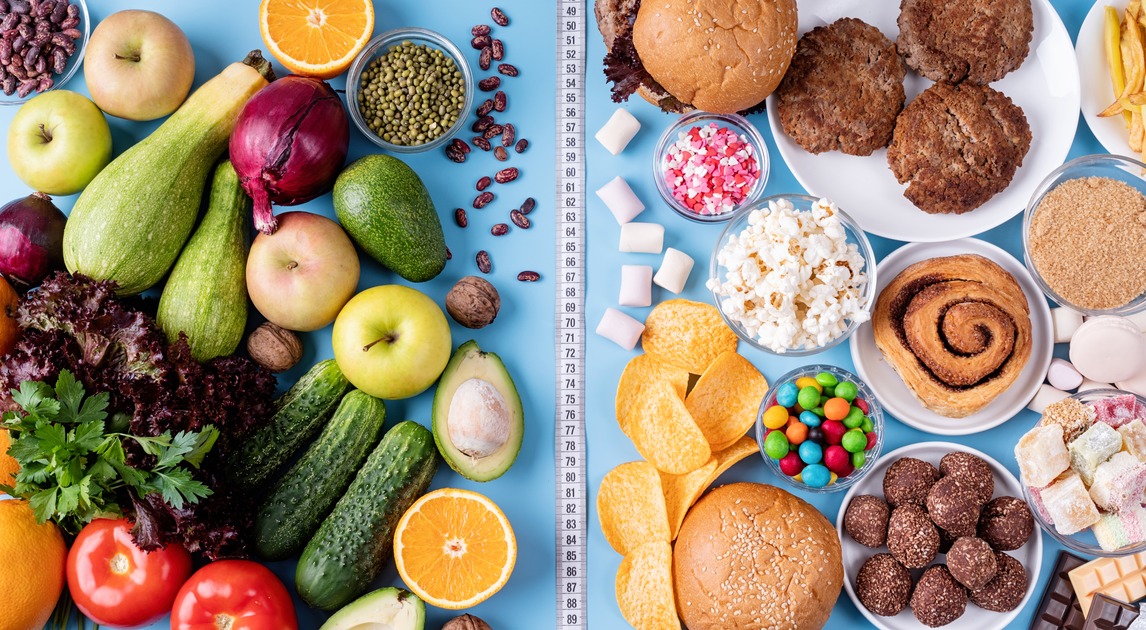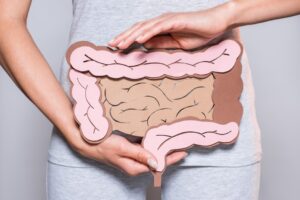The Calorie Paradox: A Landmark Study Rewrites the Rules of Weight Loss
For decades, the prevailing wisdom on weight management has been deceptively simple: a calorie is a calorie. This model suggests that weight gain or loss is a straightforward matter of arithmetic, balancing energy in against energy out, regardless of where those calories originate. However, a groundbreaking study challenges this dogma, providing the first causal evidence that the quality and processing of food can fundamentally alter how much we eat and how much weight we gain, even when calories, fat, sugar, and fiber are held constant. This research confronts a critical question in modern nutrition: What if the path to weight loss isn’t about eating less, but about eating differently?
The catalyst for this paradigm shift is a 2019 study published in Cell Metabolism, led by Dr. Kevin D. Hall at the National Institutes of Health (NIH). This was not merely another diet comparison but a meticulously designed, first-of-its-kind randomized controlled trial (RCT) engineered to isolate the specific impact of food processing. The study’s significance is underscored by the modern food environment, where ultra-processed foods (UPFs) now account for nearly 60% of the average American adult’s calorie intake and a staggering 70% for children. This investigation moves beyond simple correlation to establish a direct, causal link: ultra-processed foods drive the body to overeat and gain weight.
The true innovation of the Hall study lies in its elegant design, which systematically dismantled the long-held assumption that the negative effects of UPFs are solely due to their poor nutrient profiles. By creating two distinct diets that were nutritionally identical on paper—in terms of calories, macronutrients, sugar, sodium, and fiber—the researchers neutralized the usual suspects. This forced a scientific confrontation not with the nutrients themselves, but with the physical structure and biological consequences of the food’s processing. Any difference in outcome could therefore be attributed directly to the processing itself, a far more profound conclusion than simply reiterating that “junk food is bad.”
A Month in the Metabolic Ward: Deconstructing the NIH Experiment
To ensure the highest degree of scientific rigor, the study was conducted in the tightly controlled environment of the NIH Clinical Center’s metabolic ward. This inpatient setting eliminated the variables of daily life, allowing researchers to prepare, serve, and precisely track every morsel of food consumed by the participants.
The study employed a powerful crossover methodology. Twenty healthy adult volunteers (10 men and 10 women) were housed for one continuous month. For the first two weeks, they were randomly assigned to either an “ultra-processed” or an “unprocessed” diet. Then, for the final two weeks, they switched to the opposite diet. This design is exceptionally robust because each participant serves as their own control, minimizing the influence of individual metabolic variations and isolating the effect of the diet itself.
The diets were defined by the extent of their industrial manipulation:
- Ultra-Processed Diet: Comprised of foods with ingredients predominantly found in industrial food manufacturing, such as hydrogenated oils, high-fructose corn syrup, flavoring agents, and emulsifiers. A sample breakfast included a bagel with cream cheese and turkey bacon.
- Unprocessed Diet: Consisted of whole or minimally processed foods. The corresponding breakfast was oatmeal with bananas, walnuts, and skim milk.
Critically, participants were served meals and had access to snacks providing almost 4,000 calories per day, and were instructed to eat as much or as little as they wanted—a condition known as ad libitum. This allowed researchers to observe the spontaneous, unconscious effect of the diets on appetite and energy intake.
The results were immediate and unambiguous.
- Caloric Intake: When on the ultra-processed diet, participants spontaneously consumed an average of 508 more calories per day compared to when they were on the unprocessed diet. This surplus came from increased consumption of carbohydrates (280 kcal/day) and fat (230 kcal/day), while protein intake remained stable between the two diets.
- Weight Change: This dramatic difference in energy intake translated directly to changes on the scale. During their two weeks on the UPF diet, participants gained an average of 0.9 kg (2 pounds). During their two weeks on the unprocessed diet, they lost an equivalent amount, 0.9 kg (2 pounds). This created a total weight swing of nearly 4 pounds in just 28 days, driven solely by the level of food processing.
- Body Composition: The weight changes were not just water weight; the UPF diet led to an increase in body fat mass, while the unprocessed diet prompted a loss of body fat.
- Subjective Experience: Perhaps the most telling finding was that participants rated both diets as being equally pleasant and satisfying. This suggests that the overeating was not a conscious choice driven by taste preference but rather an involuntary biological response to the food itself.
| Study Parameter | Details |
| Design | Randomized, crossover, controlled trial in an inpatient metabolic unit |
| Participants | 20 healthy adult volunteers (10 male, 10 female) |
| Duration | 28 continuous days (14 days on each diet) |
| Dietary Conditions | Ultra-Processed Diet vs. Unprocessed Diet |
| Diet Matching | Matched for presented calories, protein, carbs, fat, sugar, sodium, and fiber |
| Intake Protocol | Ad libitum (eat as much or as little as desired) |
| Caloric Intake | On the UPF Diet, participants ate +508 kcal/day more than on the Unprocessed Diet |
| Weight Change | UPF Diet: +0.9 kg (+2 lbs) gain; Unprocessed Diet: -0.9 kg (-2 lbs) loss |
| Participant Rating | Both diets were rated as equally pleasant and satisfying |
Table 1: A summary of the NIH study design and its starkly contrasting outcomes, demonstrating the powerful effect of food processing on spontaneous energy intake and weight regulation.
The Mechanisms of Overeating: Why Ultra-Processed Foods Drive Involuntary Consumption
The NIH study demonstrated what happened, but the critical question is why. The evidence points to a multi-pronged assault on the body’s natural appetite regulation systems, where the physical properties of UPFs trigger a cascade of hormonal and behavioral changes that promote overconsumption.
The Hormone Hijack: PYY, Ghrelin, and the Disruption of Fullness Signals
Appetite is not simply a matter of willpower; it is tightly regulated by a symphony of gut hormones. Key among these are ghrelin, the “hunger hormone” that stimulates appetite, and Peptide YY (PYY), a primary “satiety hormone” released after a meal to signal fullness to the brain. The study revealed a crucial hormonal divergence between the two diets. On the unprocessed food diet, participants exhibited an(https://www.openaccessgovernment.org/ultra-processed-food-and-obesity-how-can-we-eat-more-healthy/168204/) and a decrease in the hunger-promoting hormone ghrelin. This hormonal environment naturally encouraged satiety and reduced the drive to eat. The ultra-processed diet, in contrast, failed to elicit this same robust satiety response, effectively blunting the body’s “I’m full” signals and leaving the “I’m hungry” signals unchecked. This disruption appears to stem from the destruction of the natural food matrix during processing, which is what normally stimulates the release of these vital gut hormones.
The Speed of Eating and Energy Density Deception
The brain’s satiety mechanisms are not instantaneous; there is a significant time lag between when food is consumed and when the brain registers fullness. The study observed that participants on the UPF diet ate significantly faster, a behavior attributed to the food’s texture. UPFs are often softer and require less chewing, making them easier and quicker to swallow. This rapid consumption allows for a greater volume of calories to be ingested before the brain’s satiety signals can intervene.
This effect is compounded by the food’s energy density. While the overall diets were matched for calories per gram, this calculation included beverages. When researchers analyzed only the solid foods, the UPF meals were significantly more energy-dense. This means each bite of ultra-processed food delivered a greater caloric payload, a phenomenon made worse by the faster eating rate. This combination of high energy density and rapid consumption creates a perfect storm for unintentional overeating.
The “Protein Leverage” Hypothesis
Another compelling explanation is the “protein leverage” hypothesis, which suggests that humans have a powerful, innate biological drive to consume a target amount of protein. If a diet has a low percentage of its calories from protein—a state known as “protein dilution”—people will unconsciously overeat total calories from fat and carbohydrates in an effort to meet their protein requirements. Many UPFs are classic examples of protein dilution, being high in refined carbs and fats but relatively low in protein. This aligns perfectly with the study’s findings, where the excess 508 calories consumed on the UPF diet came entirely from carbs and fat, while protein intake remained the same across both diets. This suggests participants may have been subconsciously driven to consume more food to satisfy an unmet protein target.
The Hyper-Palatability Trap: Engineering Foods for Reward
Finally, UPFs are not merely foods but “industrial formulations” engineered to be hyper-palatable. By combining high levels of fat, sugar, and salt in ratios rarely found in nature, these products can intensely stimulate reward pathways in the brain. This can override the body’s homeostatic satiety signals, promoting consumption driven by pleasure rather than physiological need. While participants in the Hall study reported equal “pleasantness,” this hyper-palatability can operate on a more subconscious level, driving the impulse for another bite even in the absence of true hunger.
These mechanisms do not operate in isolation. They form a synergistic, self-reinforcing cycle. The soft texture of a UPF enables faster eating, which exploits the biological lag in satiety signaling. This is exacerbated by the food’s failure to properly stimulate satiety hormones like PYY. At the same time, its high energy density ensures each rapid bite is calorically potent, and its low protein ratio may be driving a deeper, subconscious hunger for more. It is this multi-faceted attack on the body’s self-regulation that makes UPFs so uniquely obesogenic.
The Hidden Metabolic Cost: Unpacking the Thermic Effect of Food (TEF)
Beyond influencing how much we eat, the type of food we consume also affects how many calories we burn. This phenomenon is known as the(https://www.revolution-pts.com/blog/understanding-the-thermic-effect-of-food), or diet-induced thermogenesis. It represents the energy your body expends to digest, absorb, and metabolize the nutrients from a meal, accounting for roughly 10% of total daily energy expenditure.
Crucially, the TEF varies dramatically depending on the macronutrient composition of the food.
- Protein has the highest TEF, requiring 20-30% of its own calories to be burned during processing.
- Carbohydrates have a moderate TEF of 5-15%, with fibrous, complex carbs at the higher end of that range.
- Fat is the easiest to process, with a minimal TEF of just 0-5%.
This metabolic reality provides a powerful, independent mechanism explaining the superiority of whole-food diets. A diet rich in unprocessed foods, which are naturally higher in protein and fiber, carries a built-in metabolic advantage. The body must work harder and burn more calories simply to process a whole-food meal compared to an isocaloric UPF meal, which is typically lower in protein and fiber and higher in easily digested fats and refined carbs. For example, for a 500-calorie meal, a high-protein component could burn up to 150 of those calories in digestion, whereas a high-fat component might burn as few as 25 calories.
This directly refutes the “a calorie is a calorie” dogma from a metabolic standpoint. Even if caloric intake were identical between two diets, the net energy retained by the body would be lower on the diet with the higher TEF. This means that even if the participants in Hall’s study had not spontaneously eaten less on the unprocessed diet, they likely would have still experienced a more favorable weight outcome due to the higher metabolic cost of digesting their food. This provides a powerful, parallel explanation for the study’s results.
| Macronutrient | Caloric Cost of Digestion (TEF %) | Example Calories Burned (per 100 kcal consumed) |
| Protein | 20–30% | 20–30 kcal |
| Carbohydrates (Complex/High-Fiber) | 10–15% | 10–15 kcal |
| Carbohydrates (Simple/Refined) | 5–10% | 5–10 kcal |
| Fat | 0–5% | 0–5 kcal |
Table 2: The significant difference in the metabolic cost of digesting various macronutrients. Diets rich in protein and complex carbohydrates inherently burn more calories through the process of digestion and absorption.
Beyond the Scale: The Broader Health Implications of Food Processing
The impact of ultra-processed foods extends far beyond weight gain. A growing body of evidence from large-scale observational studies links high UPF consumption to a wide array of adverse health outcomes. A 2024 review of 45 meta-analyses covering nearly 10 million people found “convincing” or “highly suggestive” evidence for the following increased risks associated with high UPF intake:
- Obesity and Metabolic Disease: A 55% increased risk of obesity and a 40% increased risk of Type 2 diabetes. The disruption of the food matrix can lead to a larger glycemic response, and additives may impair the gut-brain axis.
- Cardiovascular Disease: A 50% increased risk of death from cardiovascular disease.
- Mental Health: A 48% increased risk of anxiety and a 20% increased risk of depression.
- All-Cause Mortality: A 21% increased risk of early death from any cause.
These associations may be driven by mechanisms beyond the food’s macronutrient profile, including the effects of industrial additives like emulsifiers on the gut microbiome and the leaching of endocrine-disrupting chemicals like BPA from plastic packaging, which can interfere with fat and glucose metabolism.
Context and Controversy: Processing vs. Macronutrients
The sharp focus on food processing helps to reframe decades of confusing and often contradictory nutrition research, particularly the long-running “low-carb versus low-fat” diet wars. Numerous meta-analyses comparing these two strategies have concluded that, over the long term, neither diet holds a consistent or significant advantage for weight loss when followed ad libitum. This has led to widespread confusion and the general conclusion that any diet can work as long as it creates a calorie deficit.
However, these analyses may have been asking the wrong question. The critical flaw in most of this research is the failure to control for the degree of food processing. A “low-fat” diet can be composed of whole foods like fruits and vegetables or ultra-processed, low-fat snack foods. Likewise, a “low-carb” diet can be based on whole foods like fish, avocados, and leafy greens or on ultra-processed keto-friendly bars and shakes. The Hall study is the key that unlocks this puzzle. By meticulously matching macronutrients and isolating processing as the independent variable, it demonstrated a powerful effect that was likely acting as a massive, unmeasured confounding variable in previous diet trials. The reason no clear winner emerged between low-carb and low-fat diets may be that the much stronger effect of food processing was washing out any smaller, more subtle effects of macronutrient ratios. This suggests that the most effective dietary strategy is not to fixate on the percentage of carbs versus fat, but on the quality and integrity of the food itself.
The Socioeconomic Reality: The Challenge of Eating Whole
While the scientific evidence is compelling, it is crucial to acknowledge the practical challenges of avoiding ultra-processed foods. As Dr. Hall himself cautioned, “We have to be mindful that it takes more time and more money to prepare less-processed foods“. UPFs are engineered not only for palatability but also for convenience, affordability, and long shelf life—qualities that are highly valued in a time-poor, economically strained society. Furthermore, issues like food deserts mean that for many lower-income communities, access to fresh, whole foods is limited, making the advice to “just eat whole foods” a matter of privilege. A comprehensive solution must therefore address not only individual choices but also the systemic issues of food access and affordability.
Conclusion and Actionable Recommendations: Navigating the Modern Food Environment
The evidence is clear and causal: ultra-processed foods are uniquely formulated to drive overconsumption and weight gain through a combination of hormonal disruption, behavioral modification, and a low metabolic cost of digestion. This occurs independently of their calorie, sugar, or fat content. While the macronutrient composition of a diet is not irrelevant, the degree of food processing appears to be a far more powerful determinant of energy intake and body weight.
Navigating the modern food environment requires a shift in focus from calorie counting to food quality. The following strategies, grounded in the mechanisms discussed, can help individuals regain control over their body’s natural appetite and metabolism systems:
- Prioritize Protein and Fiber: Anchor meals around protein-rich foods (lean meats, fish, eggs, legumes) and high-fiber carbohydrates (vegetables, fruits, whole grains). This leverages both their superior satiety effects and their higher thermic effect of food.
- Slow Down: Make a conscious effort to eat more slowly. This allows time for the body’s natural satiety hormones, like PYY, to be released and signal fullness to the brain before excess calories have been consumed.
- Read the Ingredient List, Not the Health Claims: Learn to identify UPFs by looking for long lists of unfamiliar, industrial ingredients (e.g., corn syrup solids, hydrogenated oils, modified starches, emulsifiers, artificial flavors) rather than being swayed by front-of-package claims like “low-fat” or “natural”.
- Focus on Addition, Not Just Subtraction: Instead of concentrating solely on eliminating “bad” foods, focus on actively adding more whole, unprocessed foods to every meal. Swapping white bread for whole grain, or a sugary snack for fruit and nuts, can significantly improve satiety and metabolic response.
By understanding the powerful biological effects of food processing, it becomes possible to make choices that work with, rather than against, the body’s innate systems for regulating weight.
| Unprocessed/Minimally Processed | Processed Culinary Ingredients | Processed Foods | Ultra-Processed Foods |
| Fresh fruits, vegetables | Oils, butter, salt, sugar | Canned vegetables, simple breads & cheeses | Packaged snacks (chips, cookies) |
| Eggs, fresh meat/fish | Vinegar, honey, maple syrup | Salted/roasted nuts & seeds | Sugary breakfast cereals, instant soups |
| Dried legumes, whole grains | Spices, herbs | Canned fish (in oil/brine) | Processed meats (sausages, nuggets) |
| Nuts, seeds, milk, plain yogurt | Flour, cornstarch | Tofu, tempeh, frozen french fries | Frozen pizzas, pre-packaged meals |
Table 3: A practical guide to identifying foods along the processing spectrum. The goal is to shift consumption from the right side of the table to the left.





